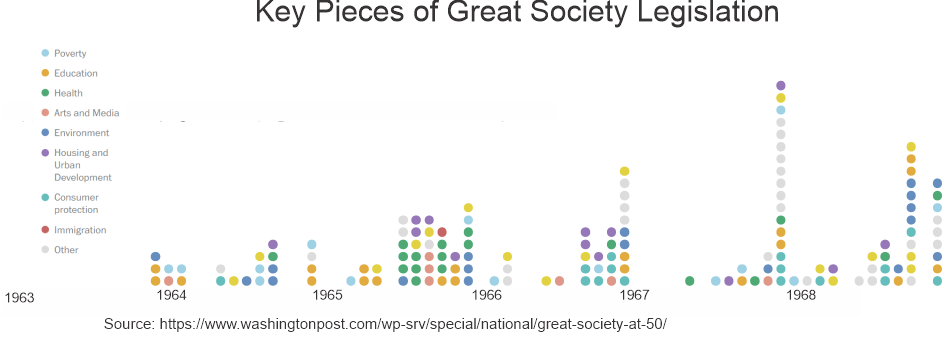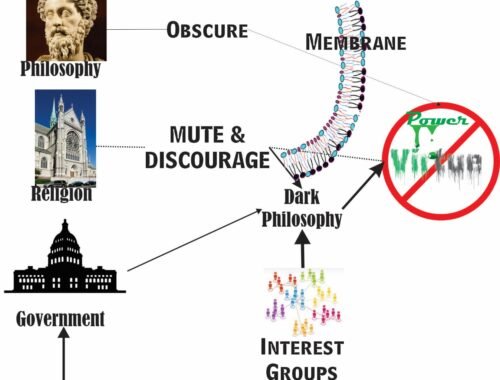
Faustian Bargain Part 2: Compassionate Conservation: Is it needed? Is it real?
This is a three-part series on developing the concept of compassionate conservativism to develop effective policies and solutions that address the problems of poverty and its threat to sustainable liberty and prosperity. Both the left and the right entered Faustian bargains that use the poor as a means to further their own ends. This keeps the poor at least perceptually poor and easy to manipulate.
“[Arthur] Brooks acknowledges the American right “traditionally doesn’t even talk about poverty,” but ascribes equal blame to the left for “talking about solutions,” while offering “no implementable answers that actually help poor people.”” Bill Moyers.
Presidents Bush I (Thousand Points of Life) and Bush II (Compassionate Conservatism) at least made some attempt at acknowledging the plight of the poor. But were their concepts mere window dressing and stage magic designed to distract attention away from a platform that did not care or perhaps sought to maintain the poor in poverty for their own political ends?
Well, to an extent, they did. Bush I recognized organizations each week as points of light. Nice, but perhaps just marketing. Bush II, however, took it into the realm of policy. In his speech, the Duty of Hope, he stated, “…in solving the problems of our day, there is no substitute for unconditional love and personal contact.”
Unlike his father, Bush II took direct action and created the Office of Faith-Based Initiatives that essentially outsourced the government’s approach to helping the poor. But the programs of the Great Society marched on as well. Since the initiative is faith-based did that mean secular approaches need not apply? Was this really a way to get his evangelical Christian believes into government? Supposedly, faith meant any faith, but did it really?
Why not secular? From a potentially cynical point of view, there were two reasons.
First, it was a Faustian bargain with his conservative Christian base. These programs were a potential gateway to evangelical conversions and to expand the scope and influence of the ultra-right conservative Christian wing of the Republican Party. Virtually every religiously based aid program since the first missionaries have used this technique for conversion.
Second, most secular organizations working with the poor are liberal and aligned with the Democratic party. Funding these organizations was tantamount to funding the Republican’s political opposition.
But does it make sense if was broader based?
Alexis de Tocqueville in Democracy in America noted that one strength of the young American Republic was that it took care of the poor and other civic actions through churches and other private organizations rather than relying on the government. 
This situation held until the Great Depression, when President Franklin Roosevelt expanded government involvement in the lives and welfare of the citizens through social security and other programs. President Johnson significantly expanded government involvement with the Great Society. The chart below shows the enactment of Great Society legislation.
But what effect did this legislation have? Has government involvement solved anything?
To answer that, let us go to the US census data. The three charts below show US poverty data reported by the Census Bureau. The first looks at all individuals in poverty as a percentage of the total population. The second two charts look at families in poverty.
The key takeaways are:
- Poverty was falling before the Great Society legislation started.
- Since the end of the Great Society legislation, the people in poverty have ranged from 10%-15% of the population.
- Since the end of the Great Society legislation, the number of families and the percentage of families has grown and ebbed, but dropped significantly in the three years before COVID.
- The number of families headed by females with no spouse doubled and their percentage of families in poverty grew dramatically.
Almost certainly, economic conditions affect the data too. But the effect, especially on the number of families headed by single women and their explosive rise in poverty, is almost certainly from the Great Society. The government pays many benefits only to families headed by women. This decision changed the family dynamic.
For President Bush II’s initiative, family poverty seemed to grow while he was in office. From just this data, however, we have a correlative relationship, not a causal relationship. We cannot say definitively what caused the rise, but we can also say that rise sharpened when he left office. I doubt the Faith-based initiative did anything other than reward his conservative Christian base.
Aside from 1000 Points of Light and Compassionate Conservatism, there appears to be little or no conservative response to the problem of poverty. But with the exploding immigration, most from poor people with little education and training, the poverty problem will almost certainly get worse before it gets better. This could add further instability to society and pressure for change. If the Republicans want to govern effectively, they need a program—not a buzz word—to help Americans to achieve their potential.
Part 3 will cover what this program may look like.





